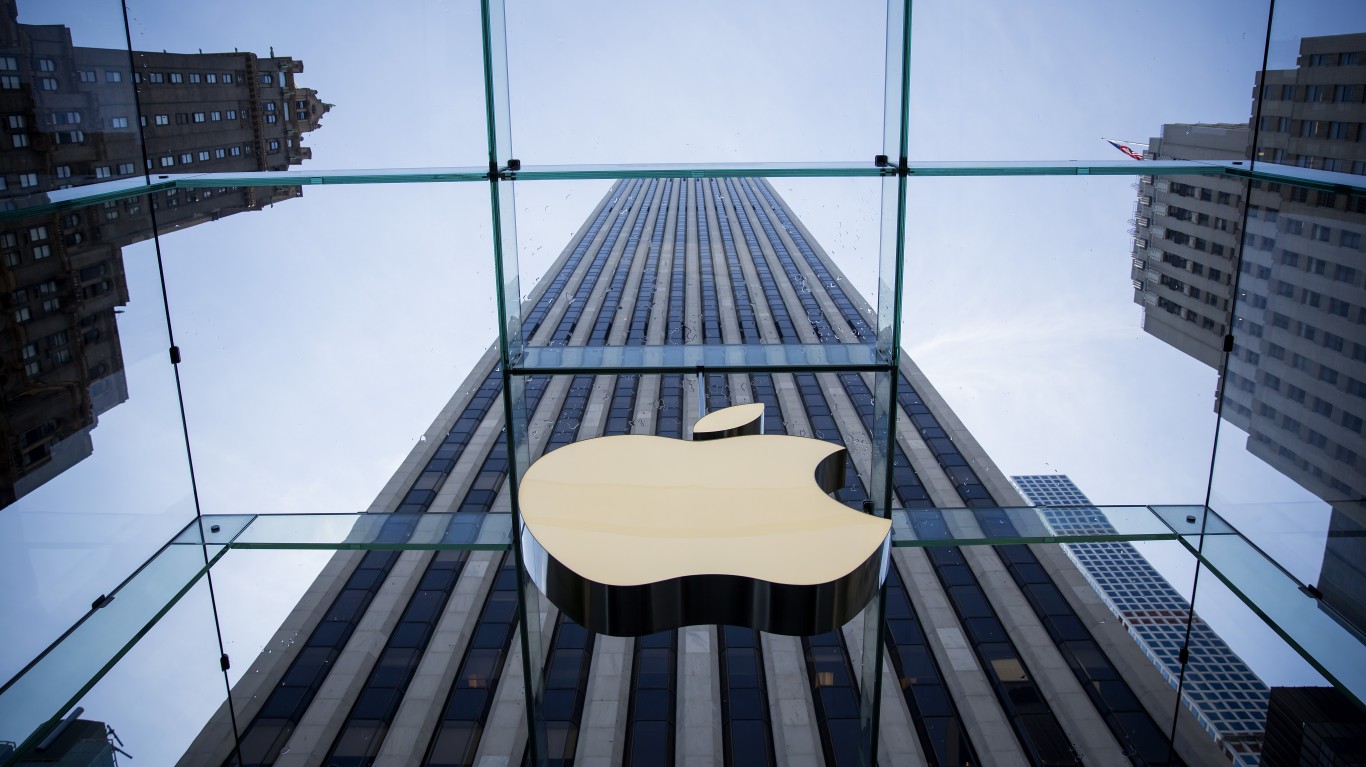Technology
Analysts Starting to Slash Bullish Apple Target Prices as Coronavirus Adds More Risk Ahead

Published:
Last Updated:

The fallout from the spreading of the coronavirus has been steadily increasing since mid-January, and the carnage really began to be felt in February. That’s when the stock market tanked and started taking the leaders down with it. Apple Inc. (NASDAQ: AAPL) had been on a rapid rise, but in February Apple essentially said that it had to withdraw guidance due to supply chain interruptions and to store closures in China. Analysts remain bullish on Apple, but target price cuts have been seen, and the news flow around the globe should have investors concerned that its estimates and targets are likely to keep being geared down if the situation doesn’t magically improve.
Things have continued to get worse since the mudslide began, and the Dow Jones industrials and S&P 500 both flirted with the correction (over 10% down) turning into a bear market (20% down). The mighty Apple has been far from immune. During the selling panic days, Apple hit a low of $256.37 on February 28 and then drifted as low as $263.00 on March 9. Earlier in 2020, Apple hit a new all-time high of $327.85. That put Apple down 21.8% from the peak at the end of February and it put it down 19.8% on March 9.
Most analysts have avoided any outright downgrades of their prior technology leaders. That is generally par for the course, as it takes a while for fundamental analysts to change their stance rapidly to Neutral or Sell if they had just been raising their target prices aggressively.
New data from IDC now suggests that the health crisis around the coronavirus will negatively affect corporate IT spending as 2020 progresses. Even the end of 2020 could see just 1% in overall IT spending under its pessimistic scenario, versus a prior forecast of 4% growth. IDC even warned that these forecasts are more likely to trend lower in the next few weeks rather than higher. While Apple may not be deep into corporate spending trends, the public is likely to assume that if corporations are slower on IT spending that the consumer may be a tad slower as well. It was just on March 9 that China’s monthly smartphone registrations fell by over 50% from February of 2019.
24/7 Wall St. has tracked multiple firms lowering their target prices or earnings estimates for Apple in March. Even as recently as March 1, 2020, Apple was raised to Outperform from Perform with a $320 target price at Oppenheimer. The firm even said that the might Apple was oversold and that its products and services will hold up better than competing products in uncertain times.
Here are some of the target cuts and other comments that have been seen since the start of March. Not all of the comments are negative, but we wanted to show both sides of the coin.
On March 11, Bank of America Securities maintained its Buy rating but lowered its price objective to $320 from $350. The firm’s Wamsi Mohan took note that as COVID-19 has spread globally he sees lower global demand, and he adjusted estimates lower for a delayed iPhone SE2 launch, as well as lower overall units for iPhone, IPad, Mac, Apple Watch, accessories and services for all of calendar 2020.
Timothy Arcuri of UBS maintained his Buy rating but cut the price target on Apple to $335 from $355. His view was that supply challenges have given way to broader global demand challenges, and he warned that if the current situation persists deep into the June quarter, then Apple might have to delay that 5G iPhone launch expected late in 2020.
On March 9, Nomura/Instinet reiterated its Neutral rating and $295 target price. The firm noted that both supply and inferred demand data points from China suggested that the worst impacts of COVID-19 may now be passing as China’s production numbers from what may be a bottom, as Chinese smartphone OEM orders to their suppliers have picked up. The firm cited it as a near-term positive, but the firm is still cautious in the sense that the much-hyped “5g supercycle” is more likely to be underwhelming.
Also on March 9, Wedbush Securities maintained its Outperform rating and its $400 target price. The firm’s Daniel Ives referred to data out of the Chinese Academy of Information and Communications Technology showing that shipments of iPhones were roughly 500,000 in February, compared to 1.27 million from the year-ago period, and noted that these were “doomsday type of iPhone units and overall smartphone sales.” That said, Ives was telling customers to take a deep breath and focus on the tech winners for the next five years to 10 years, including Apple front and center.
On March 7, CFRA maintained its Buy rating and $350 target price. The firm still noted that the risks to its targets would be weaker end-market demand, pricing pressures, competitive handset and tablet offerings gaining traction, less success with product launches/innovations and longer-than-expected hardware replacement cycles. It is too soon to check off all those boxes, but some have started to be seen already.
On March 6, Deutsche Bank maintained its Hold rating but lowered its target to $295 from $305. The firm’s Jeriel Ong cited an unexpected revenue slowdown tied to the coronavirus.
On March 2, a firm called Cascend maintained its Buy rating but trimmed its target price to $350 from $375.
Apple shares were last seen trading down 3.2% at $276.00 on Wednesday, and its 52-week range of $170.27 to $327.85 shows how high this stock is still up from its lows of last year. Apple’s consensus target price from Refinitiv was last seen at $333.04. At the end of 2019, Apple’s closing price was $292.95, and the consensus target price at that time was $218.78.
Thank you for reading! Have some feedback for us?
Contact the 24/7 Wall St. editorial team.